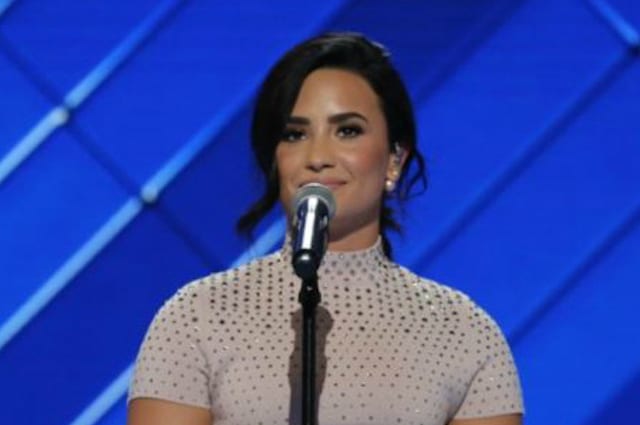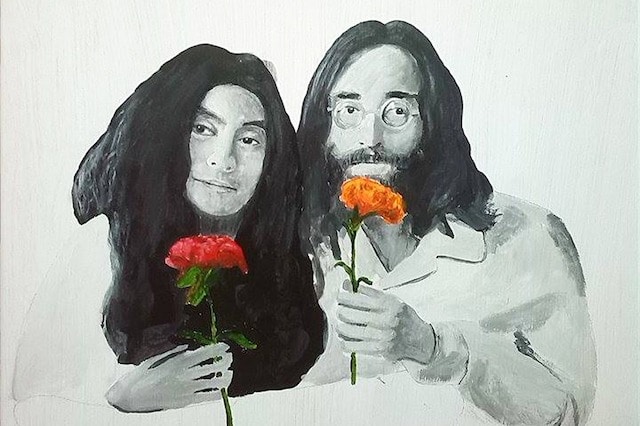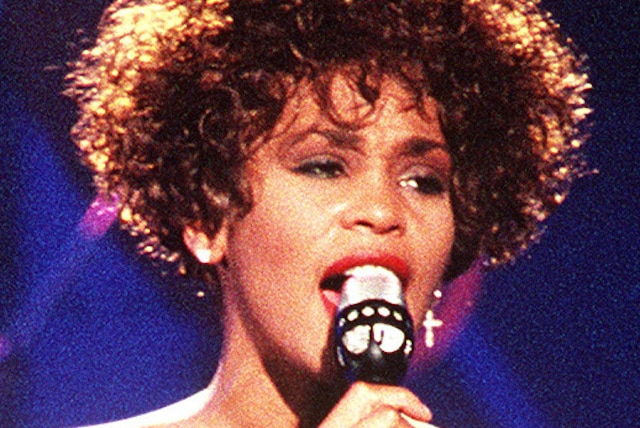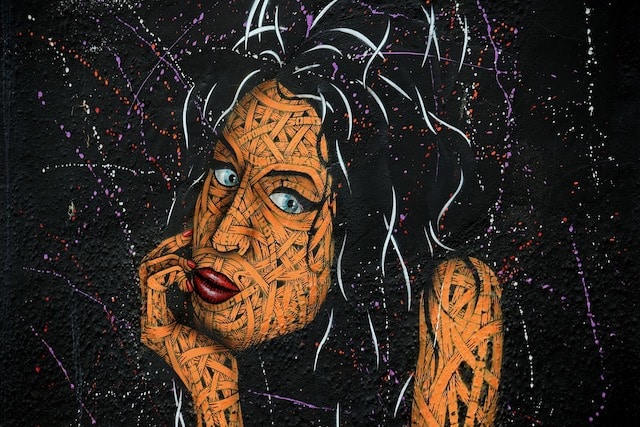Tabloids have existed since the early 1900s, with the creation of the Daily Mail. After reaching a milestone of selling a million copies a day in 1909, it began spreading like wildfire across the UK and, eventually, the US in the ’70s.
Tabloids ushered in a new way to deliver news of a different kind. It focused on crime stories, sports, crosswords, entertainment guides, and celebrity gossip. Over time, the culture around celebrities evolved. Glamorous movie stars and rock and roll icons were no longer headliners in newspapers. Instead, it was the celebrities who’d made the most controversy; the ones wrapped up in scandals, shame, and tragedy.
Over time, judging celebrities based on reporting by paparazzi became the social norm. Fast forward to today: as a society, we’ve had a chance to reflect on a lot of what went down in the ’90s and 2000s, and realize we may have made a mistake. Unfortunately, the damage done for many of these people has already been done, and we’re still trying to course correct.
10. Miley Cyrus

For pretty much Miley Cyrus’ entire career, she’s faced criticism for essentially everything she’s done. Her Disney roots meant she had the image of the wholesome star from the hit series Hannah Montana. Still, in 2008 she’d challenge this narrative. She teamed up with photographer Annie Leibovitz for a Vanity Fair shoot. The then 15-year-old Cyrus was topless, wearing nothing but a sheet. Immediately, there was outrage directed toward the young star from both the media and the public.
As she got older and Hannah Montana ended, Cyrus ventured outside of this carefully crafted Disney image every year. However, the media was always around to put her on blast. She was labeled a bad influence on her young fans, and many outlets said Cyrus was crazy. When revisiting the experience in a Rolling Stone interview, Cyrus said this about the Vanity Fair shoot, “At one point I was like, ‘Yo when I’m 16 and you’re circling my boobs and s*** like that – I’m the bad guy?”
In the same interview with Rolling Stone, she revealed she thinks things have changed, saying, “In the past two years, I think, we’ve made some big progress, especially toward women and bodies. I don’t even know if you really can slut-shame now. Is that even a thing? The media hasn’t really slut-shamed me in a long time.”
9. Demi Lovato
 For years, Demi Lovato has struggled with a variety of issues, from an eating order to substance abuse. These struggles have been in the spotlight constantly, as recently as 2021, when she revealed in her documentary that she relapsed months after her near-fatal 2018 overdose.
For years, Demi Lovato has struggled with a variety of issues, from an eating order to substance abuse. These struggles have been in the spotlight constantly, as recently as 2021, when she revealed in her documentary that she relapsed months after her near-fatal 2018 overdose.
For most of her career, stories surrounding Lovato have been related to her addictions and other struggles, far more than they’ve focused on her career. Headlines in 2018 were ruthless. TMZ put out an article titled “Demi Lovato DIDN’T ‘SUFFER’ OD, Interventionist Says She Caused It.” Us Weekly focused on Lovato’s love life. The focus wasn’t even on her health, forcing representatives to issue a statement asking for “privacy and not speculation, as her health and recovery is the most important thing right now.”
For the tabloids, Lovato’s struggles were clicks and magazine sales. For Demi, it was this constant reminder of her dark past. But she’s never been one to shy away from the truth. Lovato’s released several YouTube documentaries, including her most recent one in 2021, documenting her relapses and various struggles. Her many interviews and documentaries were a means to dismiss rumors and set the record straight. But, instead, she only found the media finding new ways to attack. Addiction has never been a strong suit for tabloids, as is evident with how they’ve handled other celebrities who’ve suffered far worse fates.
8. Yoko Ono

The Beatles were almost certainly the most popular band in the world during their decade-long run from 1960 to 1970. However, in 1970 everything came crashing down as the band announced they’d broken up. This news stunned the world. It also started a revolt against someone who wasn’t even a part of the band: Yoko Ono. Ono was labeled as the catalyst for the band’s demise almost immediately, an accusation that’s continued for over five decades.
In 2012, Beatles member Paul McCartney attempted to put the rumors to bed during an interview with influential British interviewer David Frost. He told Frost that the band was falling apart before Ono was even in the picture and that Ono “certainly didn’t break the group up, the group was breaking up.”
The most significant issue with Yoko Ono versus the Beatles was how each side was handled differently. The Beatles were held to a higher standard and placed on a pedestal, while Ono was the stick of dynamite. The media chose to use Ono as a scapegoat for something that had long been brewing, and even Ono subscribes to this thinking. Even when John Lennon was murdered in 1980, the media found ways to attack her. As a result of relentless media abuse, fans of the Beatles have found comfort in continuing this legacy even as Ono pushes 90-years-old.
7. Meghan Markle and Prince Harry

In 2020, Prince Harry and Meghan Markle announced they’d be stepping back from royal duties and forging a new life outside the royal family. This is not where our story begins, though. From the beginning of their relationship, Prince Harry and Meghan Markle’s relationship was a target of UK tabloids. People even noticed the stark difference in how the media covered Kate Middleton versus Markle.
Some of the best examples of this bias exist in various headlines, like in 2017, where the press gushed about how Prince William gifted Middleton an avocado while pregnant. In 2019 when Markle was pregnant and enjoying avo on toast, tabloids instead discussed how the avocados she ate were linked to human rights abuse and drought. This is a ridiculous example, but far from the worst offender. In 2014, William and Kate had set up companies to protect their brand. Still, when Prince Harry and Meghan did it in 2020, they were apparently engaging in a blatant cash grab.
She told Oprah in a 2020 interview, when discussing how the press ruined her mental health, that she almost took her own life. For Prince Harry, this treatment reminded him eerily of his mother Diana, who’d gone through something similar while she was a member of the royal family. Good Morning Britain host Piers Morgan, never one to shy away from attacking Markle, labeled the interview a “2-hour trash-a-thon of our royal family.” He continued to call her manipulative when she discussed her mental health. He is, sadly, far from alone in this crusade against the Duchess of Sussex.
6. Rihanna

On February 8, 2009, on the night of the Grammys, the world was stunned to learn that Chris Brown had physically abused then-girlfriend Rihanna by striking her on their way to the award ceremony. The attack resulted in Rihanna going to the hospital, and eventually the conviction of Brown.
At first, the media pretty much just reported the facts as they knew them. Most of the reports focused on the end of Chris Brown’s career. The narrative flipped when Rihanna went back to Brown a couple months later, and again in 2012. Albeit both brief reunions, the tabloids went after the victim for returning to the perpetrator. She was criticized heavily for her decision, especially considering everything she’d said in interviews about Brown. In her interview with Diane Sawyer, she told the reporter, when asked about the photo from that night, “I get very embarrassed, I feel humiliated. I get angry all over again.”
The media approached domestic violence haphazardly and with little empathy. It wasn’t a heavily discussed topic at the time. Instead of advancing these discussions, the media’s approach was to enhance dangerous myths and engage in silencing the victim under mountains of hate. Instead of Rihanna being the victim, she was treated as if she was responsible for her abuse, a message that has not aged well.
5. Janet Jackson
February 1, 2004, Janet Jackson was headlining the Super Bowl halftime show. She had gone all out to make the performance an experience. Justin Timberlake had just released his first solo album, and it was huge, so Jackson booked him to perform with her as the closing number. During the performance, Timberlake ripped away Jackson’s clothing to attempt an outfit change reveal. Instead, she was left exposed in front of the over 100 million viewers of the Super Bowl.
In 2004, everyone went after Jackson for the mishap on stage: the media, angry viewers who lodged over 500,000 complaints, and even the FCC. The FCC chairman at the time called the performance by Jackson a “classless, crass, and deplorable stunt.” She was uninvited to the Grammys, radios stopped playing her songs, and the media never stopped attacking the singer for the incident. Timberlake walked away from the incident unscathed. If anything, it propelled his career even further.
Jackson was labeled an opportunist who manufactured the moment to garner controversy and attention. The consistent and focused attention on Janet Jackson in 2004 meant her career tanked, and didn’t recover for nearly two decades. Her album, released almost two months later, was her lowest charting album since 1984. During an appearance on Letterman in March (which you can watch above), he asked relentless questions about the incident to an increasingly uncomfortable Jackson, who attempted multiple times to steer the discussion away from the Super Bowl. There were no villains in this incident, but the media portrayed Jackson as one.
4. Whitney Houston

Whitney Houston was larger than life. Her career started in the ’80s with her 1985 self-titled debut album. She’d earn bigger success with her 1991 Super Bowl performance of the National Anthem. Then, she found true superstardom in 1992 with her performance in The Bodyguard and the release of her iconic rendition of Dolly Parton’s I Will Always Love You. However, in 1999 and most of the early 2000s, people began noticing the singer slowly unraveling.
Houston’s struggle with addiction came to light. She’d been trying to make her marriage with Bobby Brown work, despite his abuse and infidelity. She’d been to rehab three separate times. Following her 2007 divorce, she became reclusive and continued abusing drugs for years.
In 2009, during an interview with Oprah, it seemed like she might have finally gotten her life together again. This was one of the first interviews in years that didn’t end in disaster, unlike an infamous Diane Sawyer interview in 2002, in which Sawyer aggressively targeted Houston’s substance abuse, weight, and other aspects of her personal life. In the Oprah interview, she was asked directly about her struggles and if she thinks she’d ever do drugs again, out of temptation. Her response was one of the most honest admissions she’d ever given, stating, “I can only take today. One day at a time. Right now, no.”
The media’s response to all the drama was only to fuel the fire. They broadcast her personal struggles heavily, beginning in the 2000s with her marriage on the rocks and her drug addiction. As the decade rolled on, they never stopped attacking. Her downfall wasn’t just treated as entertainment; it was almost cheered on because it made for good TV. While she seemed to be getting better, the constant attacks became harder to endure with every tabloid release, interview, and rumor Eventually, she relapsed. Houston died of a drug overdose on February 11, 2012, at 48-years-old.
3. Amy Winehouse

A truly talented musician, Amy Winehouse was only 19 when her first album, Frank, was released in 2003. Her life had never been all that easy. She was close with her father, but when their family fell apart because of his infidelity, she turned to self-harm at age 9. She eventually turned to music, and released her debut. Eventually, she won an award for her song “Stronger Than Me.”
Winehouse was already known for enjoying substances, but her primary poisons were alcohol and marijuana. This intensified when she met and fell in love with Blake Fielder-Civil, a user of cocaine, heroin, and ketamine. She soon released her second album, Back to Black, to instant acclaim and incredible sales. But, with a higher profile comes more media attention. Winehouse became London’s cautionary tale for broken and troubled youth. The media even had an image of Winehouse with drug residue on her nostrils as their cover story.
Eventually, Amy’s drug abuse became far more aggressive, affecting her work. A 2015 documentary called Amy captured the rise and fall of this talented artist’s career. Her struggles continued until the very end, with the media there every step of the way. They waited like vultures for her career to implode, but perhaps not anticipating the way it actually would. On June 23, 2011, Winehouse died in her London home because of alcohol poisoning.
2. Anna Nicole Smith
In 1993, Nicole Smith burst onto the covers of magazines, billboards, and television. Everywhere you went, she likely appeared. She was even referred to as the ’90s Marilyn Monroe. She was one of, if not the, biggest Playboy model of her time. They used her, and she used the media. She even once said in an interview for Good Morning America, “If my name is out there in the news, good or bad doesn’t matter, good or bad I make money, so I’m going to do whatever it takes.” But unfortunately, one side of this relationship became abusive.
For most of the ’90s, she was the fixation of news for her relationship with a Texas oilman, whom she married in 1991. He was 90-years-old, and the relationship led to her being labeled a gold digger. Anna Nicole’s life was filled with low moments throughout the early 2000s. She gained weight, and the “1990s Marilyn” comparison was declared dead. Suddenly, she was considered “white trash.” Her career declined, and she experienced a devastating loss when her 20-year-old son died of an accidental overdose in 2006. On February 8, 2007, not long after her son’s death, Anna Nicole Smith was found unconscious in her hotel room in Florida, a victim of an accidental overdose. This once vibrant star was gone.
For 24 days, the media became obsessed with chronicling this tragic story, exploiting it, and turning it into the biggest news event in the nation. For weeks tabloids ran story after story, and news coverage was wall-to-wall with the Anna Nicole Smith story. Part of the story was asking, “why did they care so much?” Smith’s fame at the time didn’t really make sense. She was just famous. While the relationship between Anna Nicole Smith was exploited on both sides, the media took it that step too far. Even in death, the media never slowed down the coverage.
1. Britney Spears

Since the early days of Britney’s career, she was maligned by the media. Back in the 2000s, paparazzi were vicious. (Not that they’ve gotten much better since then, obviously.) Spears was followed by hordes of people looking to snap photos of her. The worse Spears looked, the better for them.
In 2006, Spears imploded. After a contentious divorce, losing her aunt, and a stint in rehab, she drove to a hair salon and shaved her head.
This moment and the media blitz that followed made her out to be crazy, and the next few days were nothing short of tabloid ammunition. Spears officially entered her conservatorship in 2008, which she’d be under for nearly 14 years, officially ending in 2021. The media had created the evidence, with headlines calling her a terrible mother, mentally ill, and promiscuous, among many other names littered amongst the global gossip scene.
Documentaries and the #FreeBritney movement have changed the narrative and made it clear Spears was a victim. A 2002 interview with Diane Sawyer has been used as the pivotal piece of evidence showcasing media mistreatment. In the interview, she blames Spears for her romance with Justin Timberlake ending, causing him pain, asking about her sexual status, and many other inappropriate questions that wouldn’t be tolerated today.
It became easy to buy into these well-crafted, convincing narratives, but it also became too easy to forget that behind these stories are real people. People who can only take so much before everything falls apart, and nobody is left to help pick up the pieces.